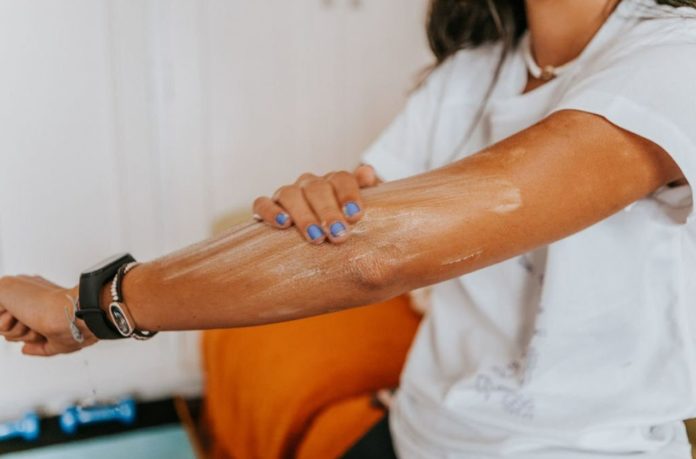With temperatures set to expand into the Midwest and Southeast over the coming days, nearly 60 million Americans are under heat advisories or excessive heat warnings, and people are being advised to take extra precautions to protect their skin.
People planning to enjoy the hot weather outside should apply sun cream to protect their skin from dangerous UV radiation.
Sun protection not only lowers the danger of skin cancer and sunburn but also slows down the sun’s aging effects.
Most individuals are ignorant of the correct steps that should be taken to protect their skin from UV damage, according to Dr Stephanie Ooi, a GP at MyHealthcare Clinic in London.
This includes not using enough sunscreen and not using SPF 50.
The expert has identified the five most common blunders people make when it comes to sun protection.
Too late to put on lotion
Many of us wait until we’ve arrived at the beach or brought out the garden deck chair before applying sunscreen.
This method, according to Dr. Ooi, is too late.
“Sunscreen needs to be applied at least 30 minutes before going outside,” she recommended. Furthermore, “most will need to be reapplied every two hours”.
“If you are swimming or sweating you will need to reapply protection even more frequently.”
Expired sun cream
Most people have a habit of digging into their cupboards for last year’s sun cream, but did you know that most sun protection lotions only have a 12-month shelf life?
Using an out-of-date sun cream will provide less protection from damaging UV rays, and the consequences could be catastrophic.
Many people are using lotions that are more than ten years old, according to experts at King Edward VII’s Hospital in London.
“You can check by looking at the back of the bottle – there will be a jar symbol with a number,” Dr. Ooi explained. “This corresponds to the number of months it can be open before being discarded .”
Use factor 50 at all times
Dr. Ooi recommends applying SPF 50 every day, rain or shine.
“Choose the highest SPF possible to give yourself the best protection,” she continued.
“Some people choose lower SPFs because they think this will boost their body’s levels of vitamin D, but studies have shown vitamin D levels aren’t affected by a higher SPF sunscreen.”
Vitamin D is produced by the body from sunshine on the skin, and it aids in the maintenance of healthy bones and muscles.
“If you are worried you can always take a daily vitamin D supplement.”
Keep applying on a regular basis
Applying lotion on a regular basis is critical for preserving your skin from UV damage.
“Most of us don’t put enough sunscreen on,” the GP added.
“To properly protect your face you should apply two finger lengths of sun cream and for your body it’s a whole shot glass.”
“If you use a spray bottle or roll-on you should be applying several passes or spritzes in each area to provide adequate protection.”
“Clothes will provide some protection but don’t forget to go under clothing edges to ensure you have good coverage across the entire body.”
There are no precise restrictions for youngsters, according to Dr. Ooi, “but you should apply sunscreen liberally – more is more.”
Children under the age of six months must be kept completely out of the sun.
You’re never completely safe.
Because UV lotion acts as a filter rather than a barrier, you are never totally protected, and your skin might still be injured.
Image Credit: Getty
You were reading: Most of Us Making 5 Common Mistakes When Applying Sunscreen – Expert
